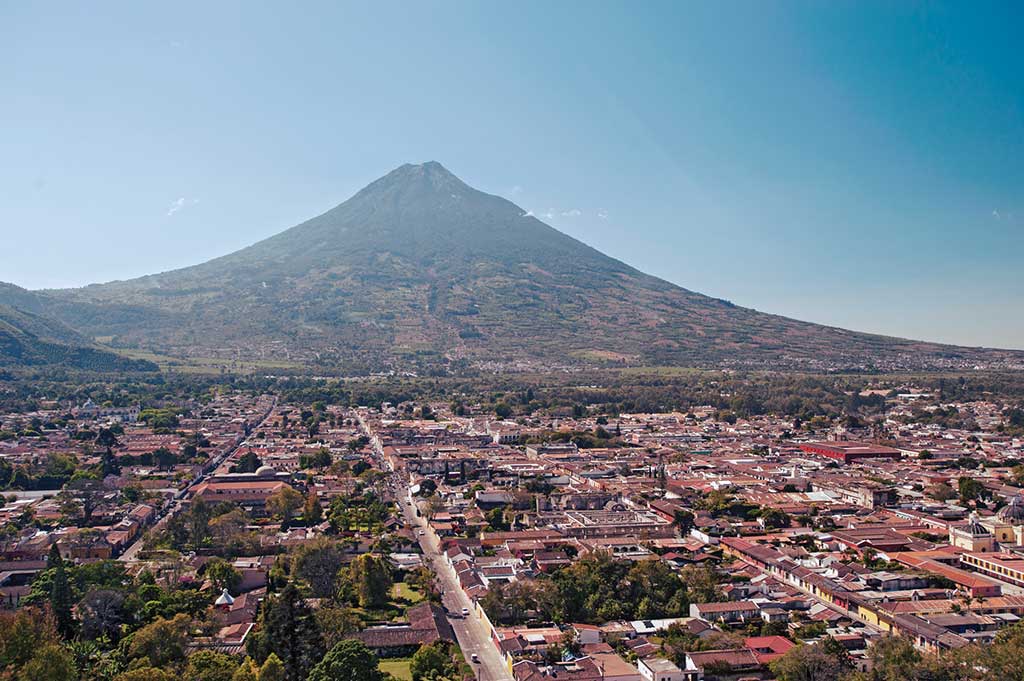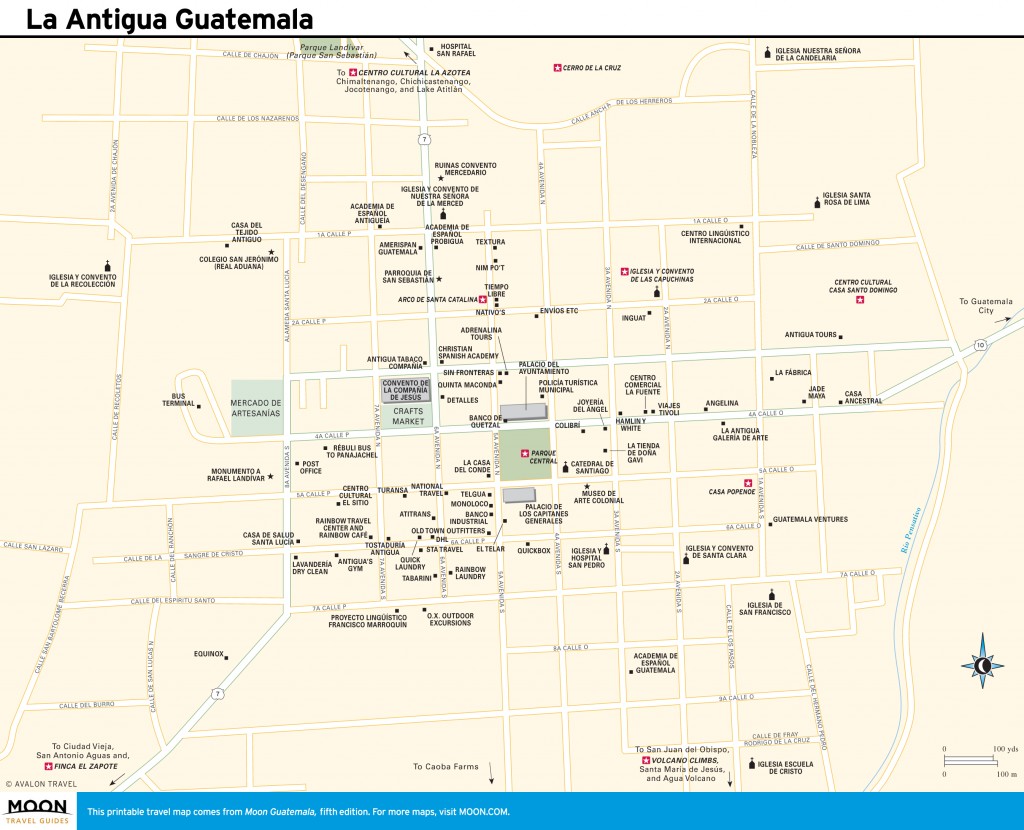Its name means “the old Guatemala,” and this is in fact what it is. The former capital of Guatemala was destroyed by earthquakes in 1773. Rather than rebuild, the country’s aristocracy opted for a fresh start in the neighboring Valley of the Hermitage, the current site of Guatemala City. And so, by decree, the city and its inhabitants moved on. Still, some Antigueños stayed behind, choosing to live among the ruins, coffee farms, verdant hillsides, and sentinel volcanoes. The city’s colonial architecture was maintained, as there were no plans to rebuild, and its ruined churches and convents remained just that. It is said the remaining residents of Antigua were so poor that they had to subsist on avocados, earning them the nickname Panzas Verdes (Green Bellies).
A week in Antigua would give you ample time to explore the town, its ruins, museums, and churches, maybe climb a volcano, visit a coffee farm, and do some shopping.Today, Antigua (as it is more commonly referred to) is a UNESCO World Heritage Site and home to much of Guatemala’s expatriate population along with scores of international students studying in its many Spanish schools. Its brightly colored houses and cobblestone streets harbor some of Guatemala’s finest restaurants, shopping, and art galleries in a fantastic mountain setting that has inspired artists, writers, and wanderers for centuries. Antigua is a pleasant mixture of Mayan and Spanish colonial influences and makes an excellent base from which to explore other parts of the country.
View of Antigua from Cerro de la Cruz with Agua Volcano in the background. Photo © Al Argueta.
Antigua lies 45 kilometers from Guatemala City via a good, paved highway. Its setting is spectacular, flanked on its southern extreme by the towering 3,750-meter (12,325-foot) Agua Volcano. The colossal 4,235-meter (13,044-foot) Acatenango and active Fuego Volcanoes lie to the west. The surrounding hillsides provide wonderful views of the valley and the volcanoes, and are excellent terrain for recreational pursuits such as hiking and mountain biking. The climate is similar to that of Guatemala City, as Antigua lies at about the same altitude, just over 1,500 meters. Days are warm and nights are pleasantly cool.
A week in Antigua would give you ample time to explore the town, its ruins, museums, and churches, maybe climb a volcano, visit a coffee farm, and do some shopping. Depending on whether or not you plan to study Spanish, you could easily spend several weeks in Antigua. Some choose to study Spanish for a week just to brush up on their skills or get a very basic foundation before moving on to other parts of Guatemala. At the minimum, you should plan on spending two nights here. Some have even recommended Antigua as a long weekend getaway from cities such as Miami, Atlanta, Houston, and Dallas because of its proximity and ease of access. The Guatemala City international airport is about a 45-minute drive away.
Getting around Antigua is fairly straightforward. True to its colonial foundations, it was laid out in a grid pattern surrounding the central plaza with calles running east-west and avenidas running north-south. The plaza is bounded by 4a Calle and 5a Calle to the north and south, and 4a Avenida and 5a Avenida to the east and west. Street addresses are labeled according to their direction relative to the plaza: Norte (North), Oriente (East), Sur (South), and Poniente (West). Most streets are known by this method, though all have names dating to colonial times. Only a handful of streets are known solely in this manner.

La Antigua Guatemala
Excerpted from the Fifth Edition of Moon Guatemala.